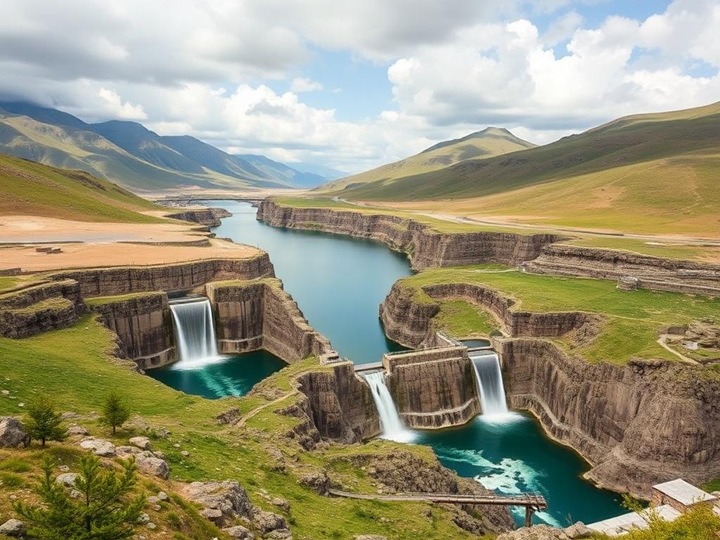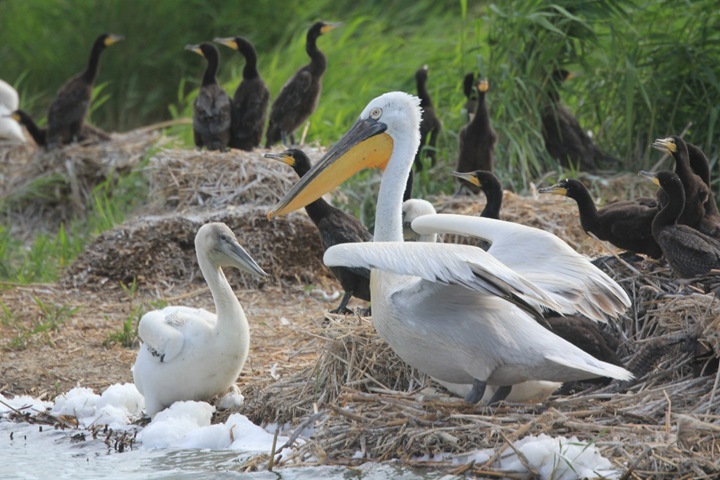On the way to energy export, Kyrgyzstan will build up rivers with small dams
Kyrgyzstan’s plans to significantly increase hydropower capacity raise serious concerns about the future of the country’s river ecosystems. Energy Minister Taalaibek Ibrayev announced his intention to reach 405 MW of capacity at the expense of small hydroelectric power plants (HPPs) by 2027. This figure, designed to cover the shortage of electricity, is only part of a larger strategy that, according to the minister, will turn Kyrgyzstan into an exporter of electricity by 2030.

The head of the energy department pointed out the enormous potential, in his opinion: the possibility of building small hydroelectric power plants with a capacity of 0.1 to 30 MW on 196 rivers of the country. This prospect of turning natural watercourses into cascades of dams and hydro turbines paints an alarming picture for the unique nature of Kyrgyzstan. The dry figures of the plans hide the potential fragmentation of river beds, disruption of fish migration routes, changes in the hydrological regime and water balance of entire areas – factors that can cause irreparable damage to biodiversity and the sustainability of aquatic ecosystems.
There are already concrete examples of the implementation of plans for the development of the country’s hydropotential. The Minister mentioned that the Chakan HPP Joint-stock company commissioned the Bala-Saruu small HPP with a capacity of 25 MW at the Kirov reservoir last year. He also said that Chakan HPP, together with a Chinese company, is building small HPPs at the Orto-Tokoy and Papan reservoirs. According to him, HPP projects with a capacity of 20-25 MW are being implemented with the participation of a state-owned company, while smaller stations, from 1 to 7 MW, are being built by local investors. This model of public-private partnership, strengthened by foreign participation, accelerates the development of Kyrgyzstan’s hydro resources, but leaves open the question of the adequacy of environmental control and compliance with environmental regulations with such active construction.
Taalaibek Ibrayev noted that last year small hydroelectric power plants with a total capacity of 48 MW were already commissioned in the country, which, according to him, now produce 350-400 thousand kilowatt-hours of electricity. He also shared his plans for 2025, when another 60-64 MW of small HPP capacity is expected to be commissioned. This rapid rate of increase in generation raises questions: is the cumulative impact of new dams on the environment properly assessed? Are the long-term effects of changes in river flows taken into account, especially in the context of climate change and the melting of glaciers feeding the rivers of Kyrgyzstan?
In addition to small hydropower plants, the Minister of Energy confirmed plans for the construction of large hydropower facilities, such as Kambar-Ata HPP-1, Kazarman, Kulanak, Verkhne-Naryn cascade and Kambar-Ata HPP-2. He specified that the construction of the Kambar-Ata HPP-2 will begin this year, $ 110 million has been allocated for the project, a tender has been held and the winner has been determined. Large-scale projects of this kind carry even greater environmental risks associated with flooding of vast territories, changes in microclimate, seismic activity and radical transformation of river valleys. The statement about Kyrgyzstan’s readiness to export electricity by 2030 underlines the economic motivation of these ambitious plans, but the environmental price of such an “energy breakthrough” remains unclear and potentially very high.
All this large-scale hydropower expansion is presented as a path to energy independence and economic growth of Kyrgyzstan. However, the forced development of the hydropotential of rivers without a comprehensive assessment of the environmental consequences and the introduction of effective compensatory measures can lead to the degradation of valuable natural complexes, loss of biodiversity and undermining the long-term environmental sustainability of the region. It is necessary to have an open discussion and independent examination of all new HPP projects so that the desire for energy power does not eventually turn into an environmental disaster for Kyrgyzstan.
Alexander Eskendirov (Rivers.Help!)


